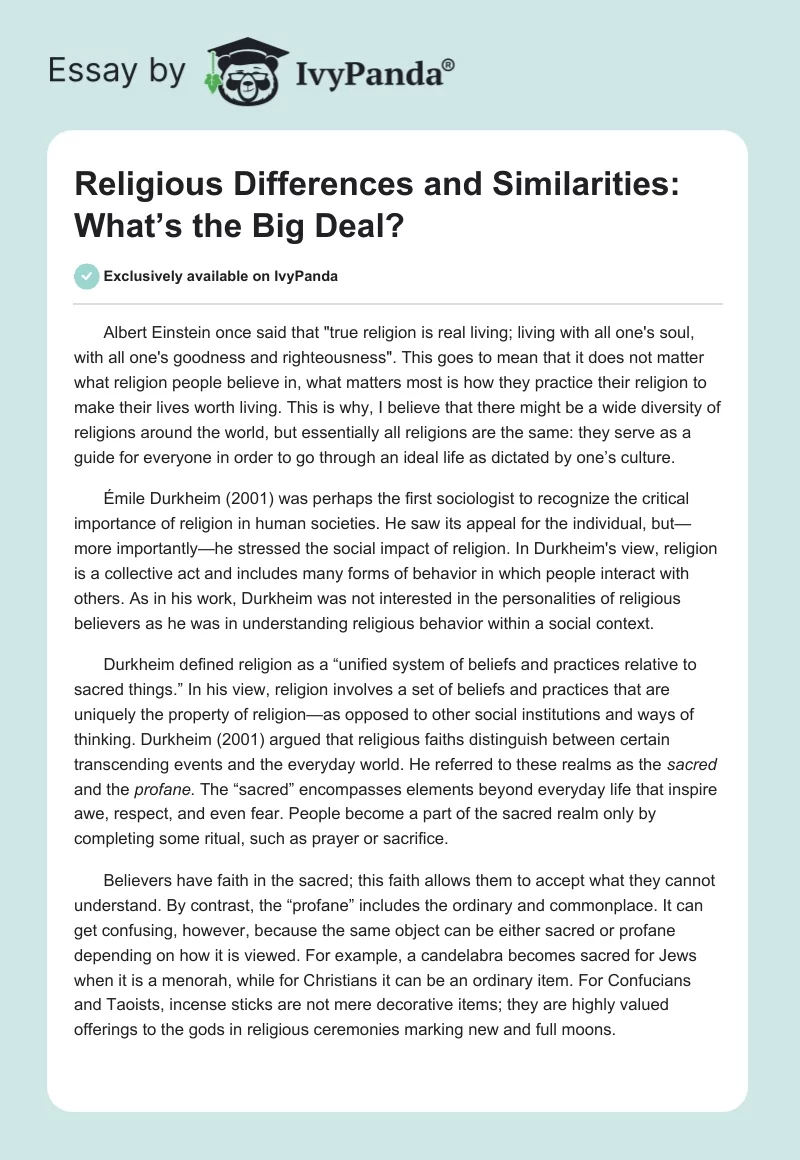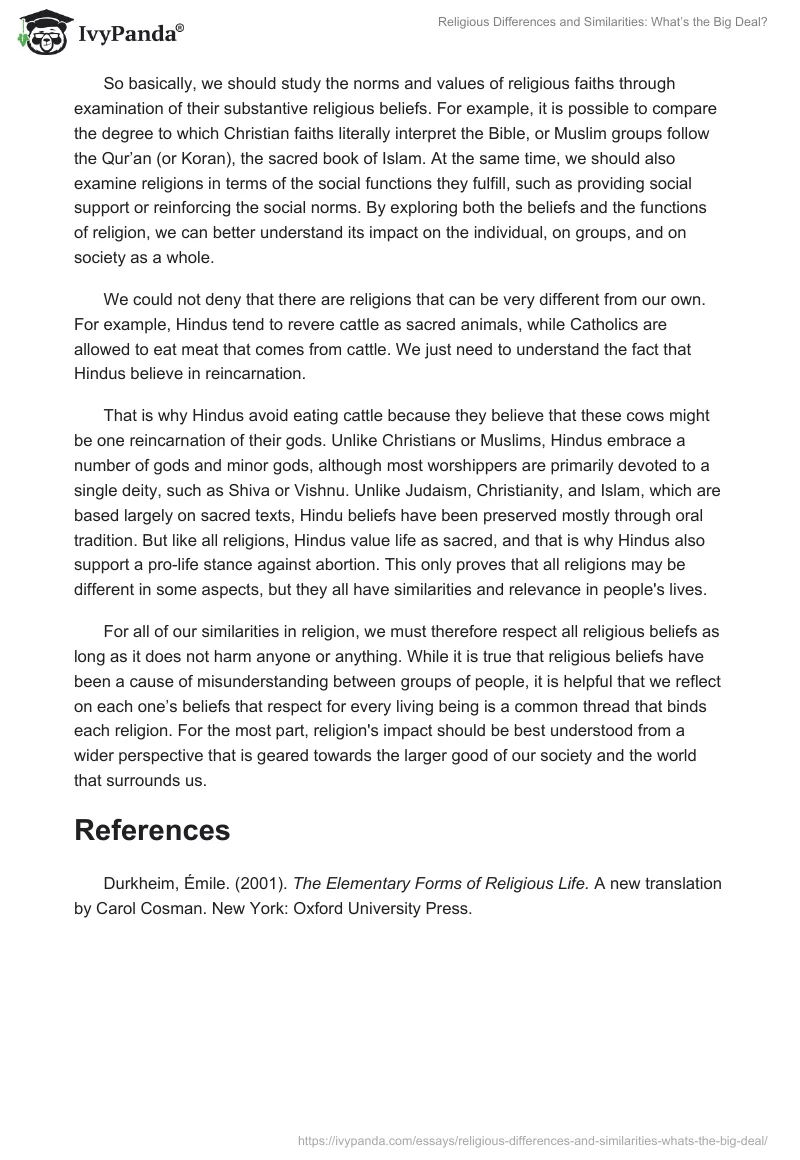Albert Einstein once said that “true religion is real living; living with all one’s soul, with all one’s goodness and righteousness”. This goes to mean that it does not matter what religion people believe in, what matters most is how they practice their religion to make their lives worth living. This is why, I believe that there might be a wide diversity of religions around the world, but essentially all religions are the same: they serve as a guide for everyone in order to go through an ideal life as dictated by one’s culture.
Émile Durkheim (2001) was perhaps the first sociologist to recognize the critical importance of religion in human societies. He saw its appeal for the individual, but—more importantly—he stressed the social impact of religion. In Durkheim’s view, religion is a collective act and includes many forms of behavior in which people interact with others. As in his work, Durkheim was not interested in the personalities of religious believers as he was in understanding religious behavior within a social context.
Durkheim defined religion as a “unified system of beliefs and practices relative to sacred things.” In his view, religion involves a set of beliefs and practices that are uniquely the property of religion—as opposed to other social institutions and ways of thinking. Durkheim (2001) argued that religious faiths distinguish between certain transcending events and the everyday world. He referred to these realms as the sacred and the profane. The “sacred” encompasses elements beyond everyday life that inspire awe, respect, and even fear. People become a part of the sacred realm only by completing some ritual, such as prayer or sacrifice.
Believers have faith in the sacred; this faith allows them to accept what they cannot understand. By contrast, the “profane” includes the ordinary and commonplace. It can get confusing, however, because the same object can be either sacred or profane depending on how it is viewed. For example, a candelabra becomes sacred for Jews when it is a menorah, while for Christians it can be an ordinary item. For Confucians and Taoists, incense sticks are not mere decorative items; they are highly valued offerings to the gods in religious ceremonies marking new and full moons.
So basically, we should study the norms and values of religious faiths through examination of their substantive religious beliefs. For example, it is possible to compare the degree to which Christian faiths literally interpret the Bible, or Muslim groups follow the Qur’an (or Koran), the sacred book of Islam. At the same time, we should also examine religions in terms of the social functions they fulfill, such as providing social support or reinforcing the social norms. By exploring both the beliefs and the functions of religion, we can better understand its impact on the individual, on groups, and on society as a whole.
We could not deny that there are religions that can be very different from our own. For example, Hindus tend to revere cattle as sacred animals, while Catholics are allowed to eat meat that comes from cattle. We just need to understand the fact that Hindus believe in reincarnation.
That is why Hindus avoid eating cattle because they believe that these cows might be one reincarnation of their gods. Unlike Christians or Muslims, Hindus embrace a number of gods and minor gods, although most worshippers are primarily devoted to a single deity, such as Shiva or Vishnu. Unlike Judaism, Christianity, and Islam, which are based largely on sacred texts, Hindu beliefs have been preserved mostly through oral tradition. But like all religions, Hindus value life as sacred, and that is why Hindus also support a pro-life stance against abortion. This only proves that all religions may be different in some aspects, but they all have similarities and relevance in people’s lives.
For all of our similarities in religion, we must therefore respect all religious beliefs as long as it does not harm anyone or anything. While it is true that religious beliefs have been a cause of misunderstanding between groups of people, it is helpful that we reflect on each one’s beliefs that respect for every living being is a common thread that binds each religion. For the most part, religion’s impact should be best understood from a wider perspective that is geared towards the larger good of our society and the world that surrounds us.
References
Durkheim, Émile. (2001). The Elementary Forms of Religious Life. A new translation by Carol Cosman. New York: Oxford University Press.



